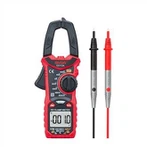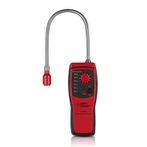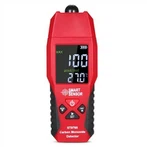What Are the Application Fields of the VOC Detector?
With the acceleration of urbanization, the problem of air pollution is becoming increasingly severe. Research has shown that China's annual VOC emissions are approximately 30 million tons, which has fueled the booming VOC detector market. It is used for continuous measurement of toxic and harmful organic gases in hazardous or industrial environments, especially suitable for personal safety protection and on-site VOC detection. So, in which fields are VOC detectors applied? Next, Suzhou Yuanhuida will introduce it to everyone.
VOCs, as one of the important sub sectors in environmental monitoring, have a market space mainly reflected in two aspects: air quality monitoring and pollution source monitoring in key areas; Its function can provide environmental protection departments with monitoring of the current air quality status in the monitoring area, as well as monitoring of enterprise pollution emission data; At the same time, it can also provide evidence for environmental disputes; At present, VOCs online monitoring equipment is suitable for industries including petrochemicals, biopharmaceuticals, packaging and printing, electronic semiconductors, surface coating, rubber and plastic products, furniture manufacturing, circuit boards, automobile manufacturing and maintenance, etc. The applicable environmental monitoring is generally large national standard air stations and small warning air stations.
The reference emission factors for its related enterprises are as follows:; The chemical industry includes benzene derivatives, organic chlorides, fluorine series, ketones, amines, esters, acids, and petroleum hydrocarbon compounds; The refining industry uses chloroethane and sulfides; The production of chemical raw materials includes benzene derivatives, organic chlorides, and sulfides; The pharmaceutical industry includes methanol, triethylamine, dimethylformamide, ethyl acetate, alcohols, acetonitrile, ethylene oxide, formaldehyde; The coking industry produces benzene and phenols, NMHC; The synthetic fiber industry includes dimethylformamide, ammonium dimethylacetamide, acetaldehyde, and ethylene glycol; The electronic manufacturing industry produces benzene derivatives, acetone, and butanone; The automobile manufacturing industry includes toluene, ethylbenzene, xylene, etc; Furniture manufacturing includes toluene, ethylbenzene, oil mist, etc; The wood industry produces benzene derivatives, etc; Packaging printing includes acetone, butanone, isobutyl ketone, ethyl acetate, and benzene derivatives; The equipment manufacturing industry uses benzene derivatives with dichloromethane, while the rubber industry uses methyl mercaptan, dimethyl sulfide, carbon disulfide, and dimethyl disulfide; The paint industry uses benzene, acetone, ethyl acetate, butyl acetate, dichloromethane as benzene derivatives, and methanol.






